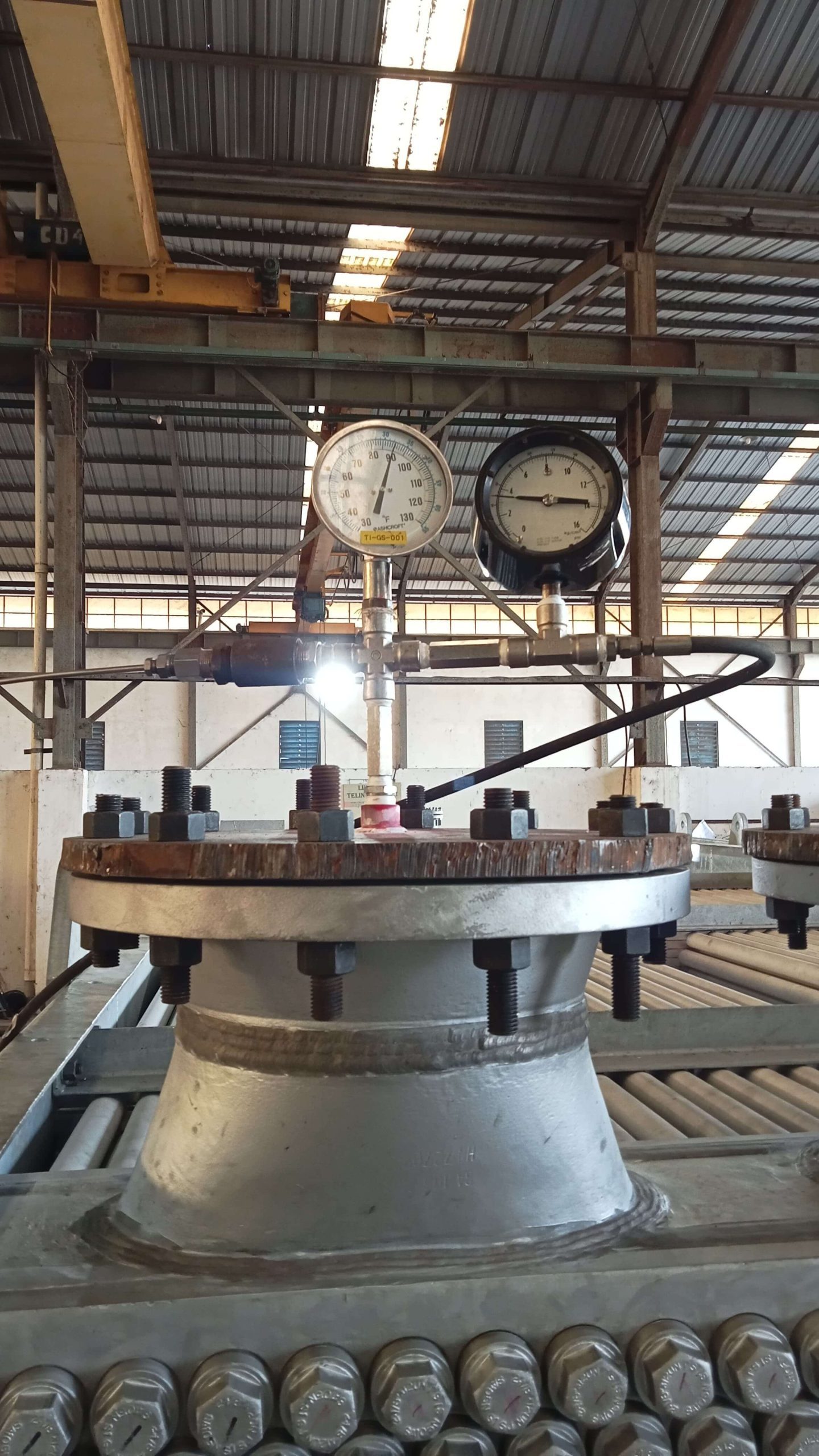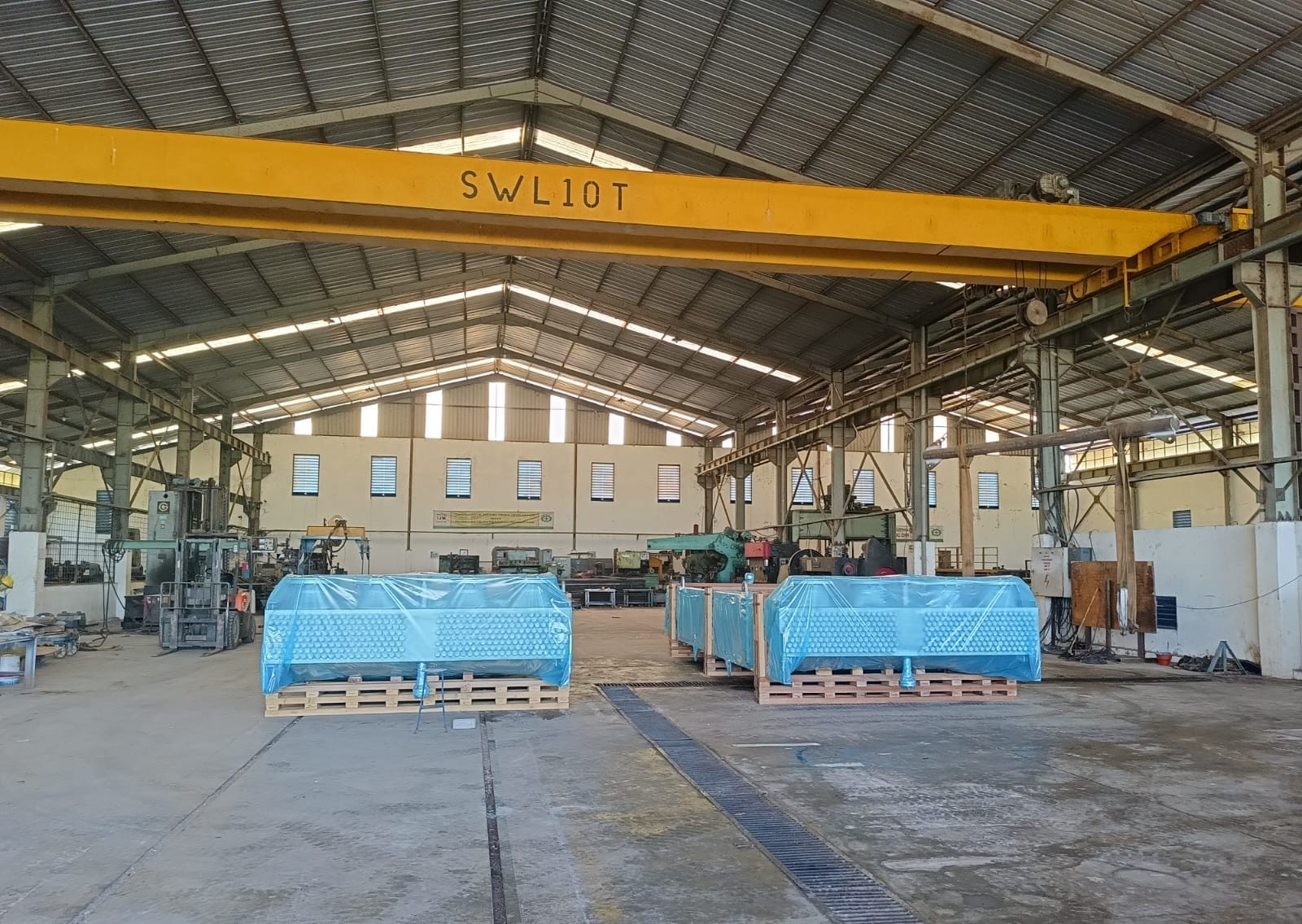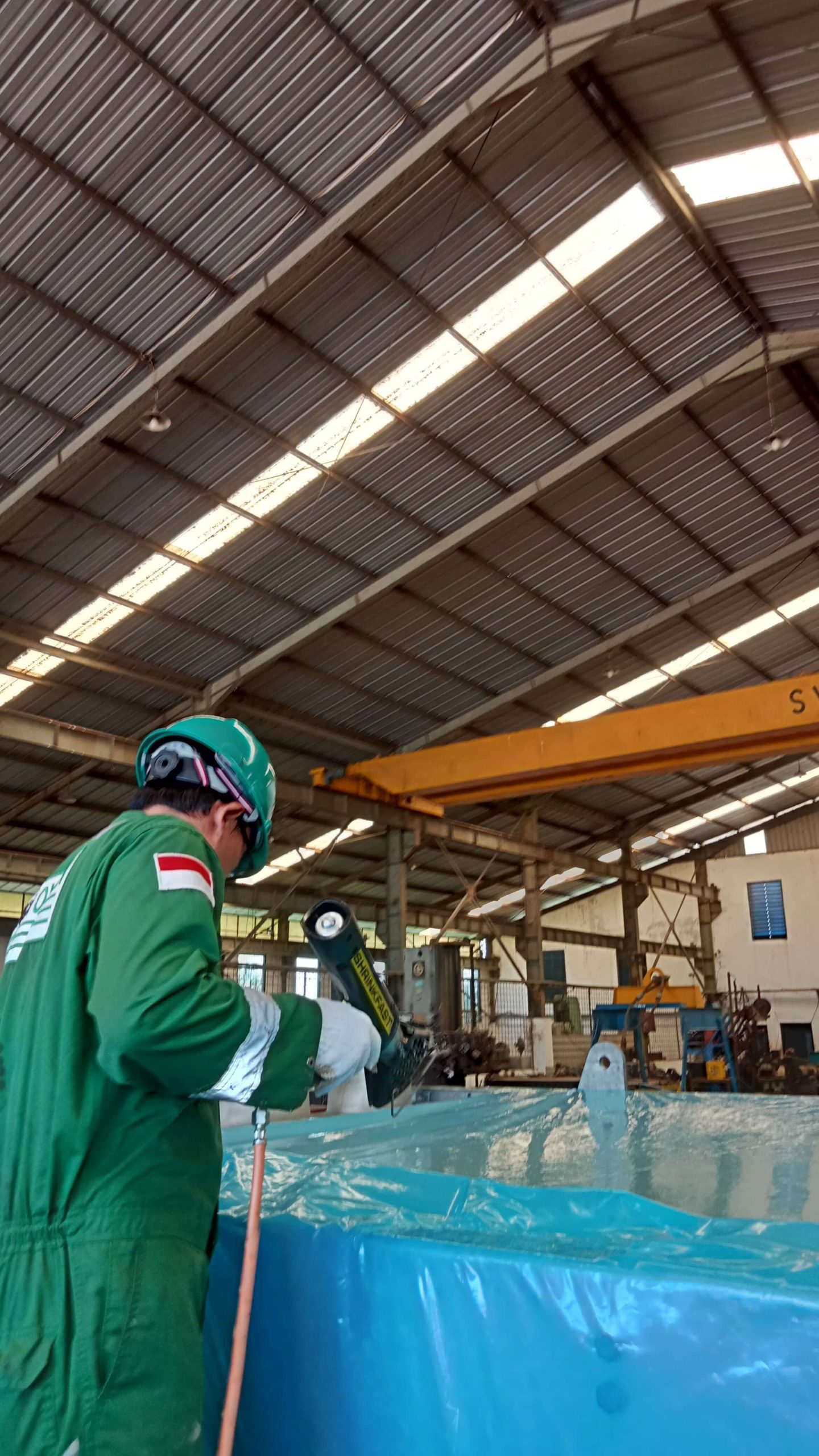While hydrostatic testing ensures heat exchanger integrity, the water used can cause flash corrosion during testing and transport. This guide explores how adding corrosion inhibitors to hydrotest water prevents costly equipment damage and project delays.
By Julie Holmquist, Content Writer, Cortec® Corporation

Imagine being an employee at an LNG company. You have been waiting three months for your order of new heat exchangers to arrive from overseas. The shipment finally comes, and you unpack the equipment to get it ready for installation. Suddenly, your heart sinks. As you inspect the heat exchangers, you do not find shiny new tubes. Instead, the internals are covered with a layer of flash corrosion that has formed sometime between manufacturing and arrival. Not only is the appearance marred—the corrosion must either be removed or the equipment replaced before the heat exchangers can be commissioned. With your project on a deadline, you will lose valuable time while installation is delayed. Is there any way to avoid these corrosion surprises and the headaches they bring? Fortunately, the answer is yes! One excellent way to start is by adding corrosion protection during hydrostatic testing (hydrotesting).
The irony of hydrotesting
The main purpose of hydrotesting is to ensure the integrity of a metal vessel—to confirm that it will not leak or burst when filled with fluids at high pressures. Hydrotesting may be done to individual tubes or the entire tube bundle after it has been assembled. Hafish Alfarizy, an application engineer at PT Tiga Ombak, an Indonesian company that provides preservation products and engineering services for the oil and gas industry, summarized the purposes of hydrotesting this way: “integrity assurance, certification, customer requirements.”[1] He explained that hydrotesting is often done by the manufacturer or supplier according to ASME standard BPVC VIII.1.[2] PT Tiga Ombak together with the manufacturer or supplier has performed such hydrotesting for air cooled heat exchangers at the manufacturer’s site after assembly and before shipment.[3] Another time hydrotesting may be desired, according to Scott Bryan (Certified Water Technologist and Technical Sales Manager at Cortec® Corporation), is just before commissioning the final equipment at the installation site.[4] While hydrotesting is intended to make sure that equipment is reliable, the introduction of hydrotest water into the system simultaneously brings a corrosion risk. “Hydrotest[ing] uses water and it will definitely cause corrosion,” Alfarizy explained. Corrosion could occur during hydrotesting as the water courses along the shiny new metal surface and causes fl ash corrosion. The residual moisture remaining in the system could also foster corrosion at any time between hydrotesting and installation, including during the long journey from one plant to another. This corrosion creates a weak point in the system where further deterioration and thinning of the metal walls could occur, eventually leading to potential leaks and failures. Other repercussions could include clogging of the system with corrosion products or “poisoning” of the water by high iron levels. As Bryan explained, some performance requirements for industrial equipment (not limited to heat exchangers) include flushing a system until the iron levels are acceptable. He noted that in one case, workers had to fill and flush a system 10-12 times before they could achieve this, wasting tens of thousands of gallons of water in the process. Switching to the right corrosion inhibitor enabled them to pass the fill and flush requirements on the first try.[5] In each situation, the water intended to verify the system’s integrity can ironically be the very instrument that causes it to lose its integrity, interrupt projects and processes, and waste time and money. That is why having a corrosion prevention strategy during and after hydrotesting is critical.
Benefits of adding a corrosion inhibitor during hydrotesting

The presence or absence of a corrosion inhibitor during hydrotesting makes a stark difference. Alfarizy noted that PT Tiga Ombak first added corrosion inhibitors to hydrotest water in 2024 when hydrotesting air-cooled heat exchangers on their way to an LNG project in another country. He said that without a corrosion inhibitor, corrosion starts quickly, while with the right corrosion inhibitor, it will not appear for a long time—or perhaps not at all, depending on how long the corrosion inhibitor is active. He also mentioned that, while nitrogen purging is a very common strategy for corrosion prevention after hydrotesting, adding a corrosion inhibitor to the hydrotest water was less expensive and more effective.[6] The ideal corrosion inhibitor contains a blend of “contact” and “vapor-phase” corrosion inhibitors that leave behind a thin film of corrosion protection as they are circulated through the system. The “contact” corrosion inhibitors offer protection only when in direct contact with metal surfaces, while “vapor-phase” corrosion inhibitors have the ability to migrate through void spaces and attach to metal surfaces as a molecular protective layer. During hydrotesting, when the system is flooded with water at high pressure, contact protection is the main mechanism as the treated water leaves behind a thin film of corrosion inhibitors. However, once the water is drained, the remaining film will release corrosion inhibiting vapors that protect surfaces where the corrosion inhibiting film is not present and will continue to protect the system as long as they remain trapped inside. Bryan explained that at this point, it is normally necessary to dry the vessel internals to minimize the amount of water in the system; however, with the right corrosion inhibitors, treated residual water can have the added benefit of leaving behind a greater “reserve” of corrosion inhibitors for an enhanced level of ongoing protection.[7] These corrosion inhibitors can provide protection for up to two years, depending on the dosage used. Ideally, corrosion inhibitors will be dosed at a rate that provides enough chemistry to provide ongoing protection during the shipping stage and any storage periods that may follow at the installation site. Alternately, another form of vapor-phase corrosion protection, such as fogging fluid, can be applied to provide interim protection between hydrotesting and installation instead of the higher cost option of nitrogen blanketing with its inherent challenges.
Hydrotesting best practices

Picking any corrosion inhibitor and adding it to the hydrotest water is not an end-all for corrosion problems. As mentioned above, an appropriate film-forming corrosion inhibitor with contact and vapor-phase protection is best, especially if it has a good history of hydrotesting success. Secondly, it is important to have an application where both the water and the corrosion inhibitor can be reused. As Bryan noted, using excess water is “cost prohibitive.” Instead of sending thousands of gallons of water and corrosion inhibitor down the drain, recycling the water allows both the water and the corrosion inhibitor to be used more than once, as long as the corrosion inhibitor stays at the right concentration and the solution remains free of contamination. A little corrosion inhibitor may need to be added each time to maintain the proper dose; however, recycling hydrotest water that is still in good condition can reduce overall costs by wasting fewer resources. Another important step to ensure best results during hydrotesting is to make sure the system is clean. Alfarizy noted, “If there is visible dirt and flash rust, it is better to perform surface preparation….”[8]. This may require the use of a basic alkaline cleaner with flash corrosion protection, or it may call for a rust removal step followed by cleaning and neutralization. Either way, removing contaminants is critical to enabling the corrosion inhibitors to do their job effectively. The right dose and application procedure is also critical. In one case, a heat exchanger supplier was having corrosion problems despite using an extremely popular corrosion inhibitor during hydrotesting. The manufacturer of the corrosion inhibitor stepped in to examine the problem and found out the supplier needed to revamp their application method. First, they needed the proper dosage, a number that is variable depending on the water type. Another critical step was adequate mixing to ensure that a homogeneous blend of corrosion inhibitors and water was reaching every part of the system. One technique was to mix the solution in a large tank and test to validate the right concentration of corrosion inhibitors. Another option was to inject corrosion inhibitors into the water as the vessel filled, making sure to complete the dose by the time the vessel was 80% full. Sufficient dwell time was also critical to allow the corrosion inhibitors to be fully applied to the system (in this case, the treated water was left in the vessels for at least two hours). Although the heat exchangers were drained, they were not force-dried, and the absence of corrosion complaints indicated that the problem had been solved.[9]
Multi-national success story

In 2024, PT Tiga Ombak was involved in a cross-national effort to deliver heat exchangers corrosion-free to an LNG customer in Malaysia. This customer was concerned about corrosion because of a previous negative experience from an overseas supplier and enlisted VCI Technology (M) Sdn Bhd to help avoid the problem on this shipment. This time, corrosion protection started before the heat exchangers were even assembled. Since the tube manufacturer was located in South Korea, VCI Technology (M) Sdn Bhd coordinated with Cortec® Korea to provide corrosion protection at the fabrication site. This involved adding a corrosion inhibitor to the water when hydrotesting each tube. The tubes were drained, inspected, and fogged with a waterborne vapor-phase corrosion inhibitor for shipment. The tubes were capped to trap the vapor-phase corrosion inhibitors inside and wrapped in corrosion inhibiting film. Thus protected, they were ready for an eight to nine week journey by sea to Indonesia. Corrosion risks from fluctuating temperatures and condensation were high during this time, but the tubes successfully reached the heat exchanger manufacturer in good condition.[10]. Once in Indonesia, responsibility shifted to PT Tiga Ombak, who conducted hydrotesting with corrosion inhibitors. This time, the intention was to provide internal corrosion protection after hydrotesting, and the product selected was found to be an economical and convenient alternative to nitrogen blanketing. The process included hydrotesting with water at three different pressures and took an hour and a half to complete.[11] The external surfaces of the tubing in the assembled heat exchangers were protected by spraying them with a water-based rust preventative that dried into a thin clear film. The final stage was to shrink wrap the two units in film containing vapor-phase corrosion inhibitors. The training and execution of this stage of the project were handled in just a few weeks, allowing the heat exchangers to reach the LNG site on time and protected, thanks to sound products and practices and the cooperation of multiple parties scattered across South Korea, Indonesia, and Malaysia.[12] The case history above underscores the need for hydrotesting and corrosion protection at multiple points in the product life cycle and supply chain. If the tubes had corroded during hydrotesting or shipment, the appearance would have reflected poorly on the tube fabricator while presenting extra challenges to the heat exchanger manufacturer. If the assembled heat exchangers had rusted during hydrotesting or delivery to the customer in Malaysia, the LNG company would have been back where they started with compromised goods that could have delayed installation and put their entire project on hold. By preempting these problems at every point, both the manufacturers and end user ended up with a happy result. Special thanks to Scott Bryan, CWT, of Cortec® (https://www.cortecvci.com/) for advising article content and structure; Hafish Alfarizy of PT Tiga Ombak (www.tigaombak.co.id) for sharing his experiences; and Jay Zhang of Cortec® (https://cortec-sea.com/) for facilitating communication.
References
[1] Alfarizy, Hafish. Email interview, 29 May 2025.
[2] Alfarizy, Hafish. Email communication, 18 Jun 2025.
[3] Alfarizy, Hafish. Email interview, 29 May 2025.
[4] Scott Bryan. Personal interview, 14 Mar 2025.
[5] Bryan.
[6] Alfarizy.
[7] Bryan. Personal communication, 19 Jun 2025.
[8] Alfarizy.
[9] Cortec. “Solving Corrosion Problems During Heat Exchanger Hydrotesting,” Case History 845, Dec 2024. Accessed 18 Jun 2025 <http://www.corteccasehistories.com/>.
[10] Cortec. “Protecting Heat Exchanger Tubes During Shipping and Storage,” Case History 851, Apr 2025. Accessed 27 Jun 2025 <http://www.corteccasehistories.com/>.
[11] Alfarizy.
[12] Cortec. “Corrosion Protection of Heat Exchangers During Shipment and Interim Storage,” Case History 852, Apr 2025. Accessed 27 Jun 2025 <http://www. corteccasehistories.com/>.
About this Technical Story
This Technical Story was first published in Heat Exchanger World Magazine in September 2025. To read more Technical Stories and many other articles, subscribe to our print magazine.
Technical Stories are regularly shared with our Heat Exchanger World community. Join us and share your own Technical Story on Heat Exchanger World online and in print.

